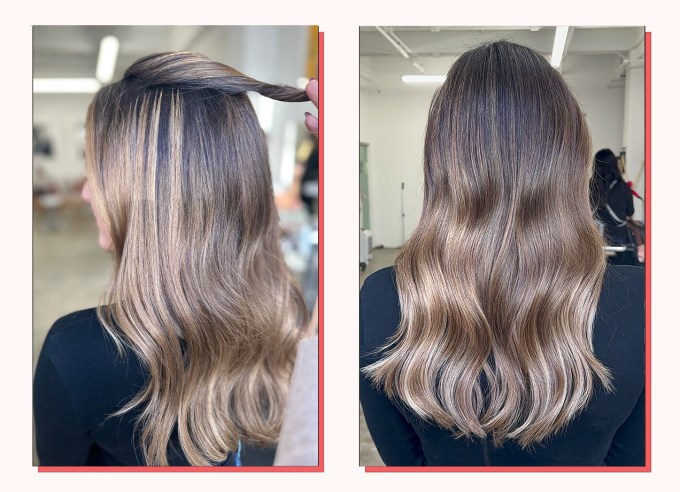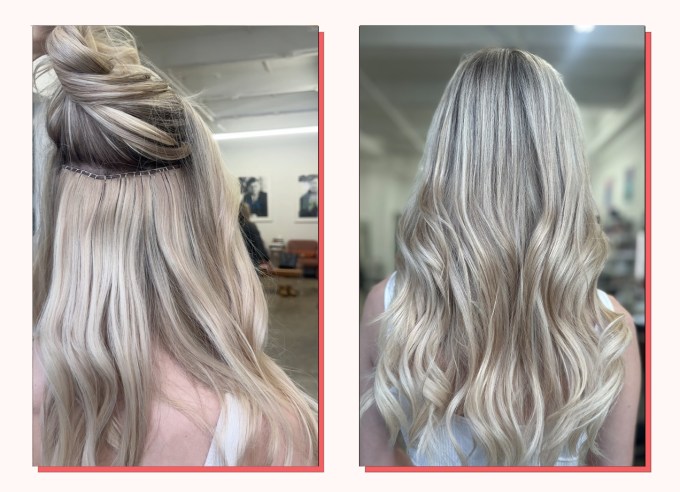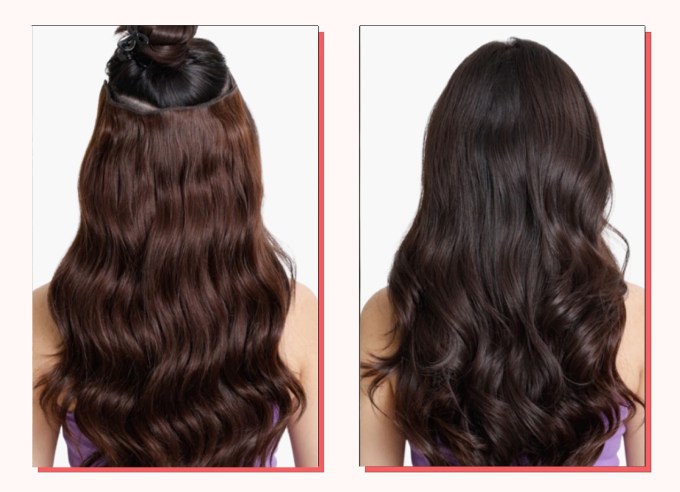Storytime: In the ninth grade, I was obsessed with the idea of growing out my hair naturally. I tried everything from coconut oil to peppermint oil to scalp serums—and I even resorted to using specialized shampoo for horses. (Admittedly, that was a low point, but YouTube convinced me it would work!) Then one day, my friend Sommer walked into English class and everything changed. Her hair had seemingly grown five inches overnight. After pestering her to tell me her secret, she lifted up the first layer of her hair to reveal a thick weft of clip-in extensions. That day after school, I raced to Sally Beauty, per Sommer’s recommendation and found the highest-quality clip-ins on the market. Two hours and $280 for an 18-inch pack later, I was set. I wore the extensions for the rest of the year, feeling a new sense of confidence every time I clipped them in.
Fast forward to the following year. After daily use, I realized that this habit was becoming more costly than I’d anticipated. I had to replace the extensions every two months and I needed my hairdresser to cut and layer them into my locks every time I got a new set. Also, the clip-ins were taking a toll on my fine hair. I started developing bald spots from the weight of the wefts. They’d dig into my scalp, making them itchy and uncomfortable during extended wear. Eventually, sad as I was to part ways with my extra length, I decided to ditch my wefts in favor of returning to natural hair growth remedies. That is, until I was introduced to K-tip extensions.
Unlike the clip-ins I was familiar with, these were individual strands that were bonded to my natural hair, making them feel weightless. Even better, they were semi-permanent, so I didn’t need to worry about styling them every day (or fear that they’d come flying out during a spin class). And while they can last for up to five months, they’re far more expensive than clip-ins. And by that, I mean K-tips typically start at $1,000—and the price increases depending on how many strands you need. Several thousands of dollars later, I had to wonder: Are these really the best extensions for thin hair? And are there more affordable options out there that could still make my hair look naturally longer and thicker (and not cheap)? I tapped an extension specialist for some answers.






